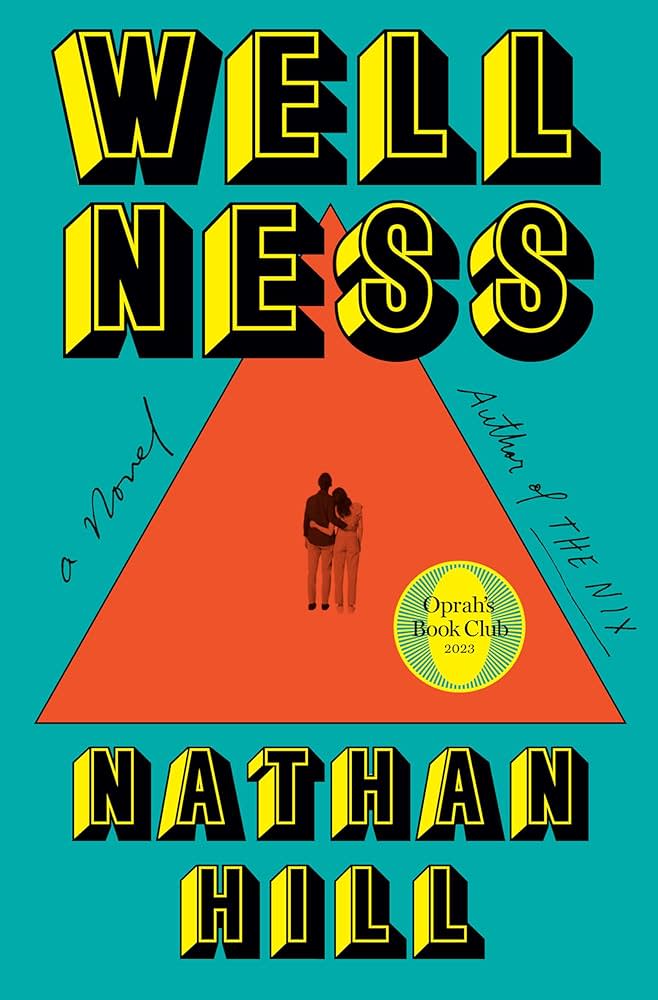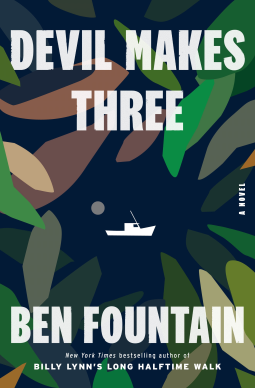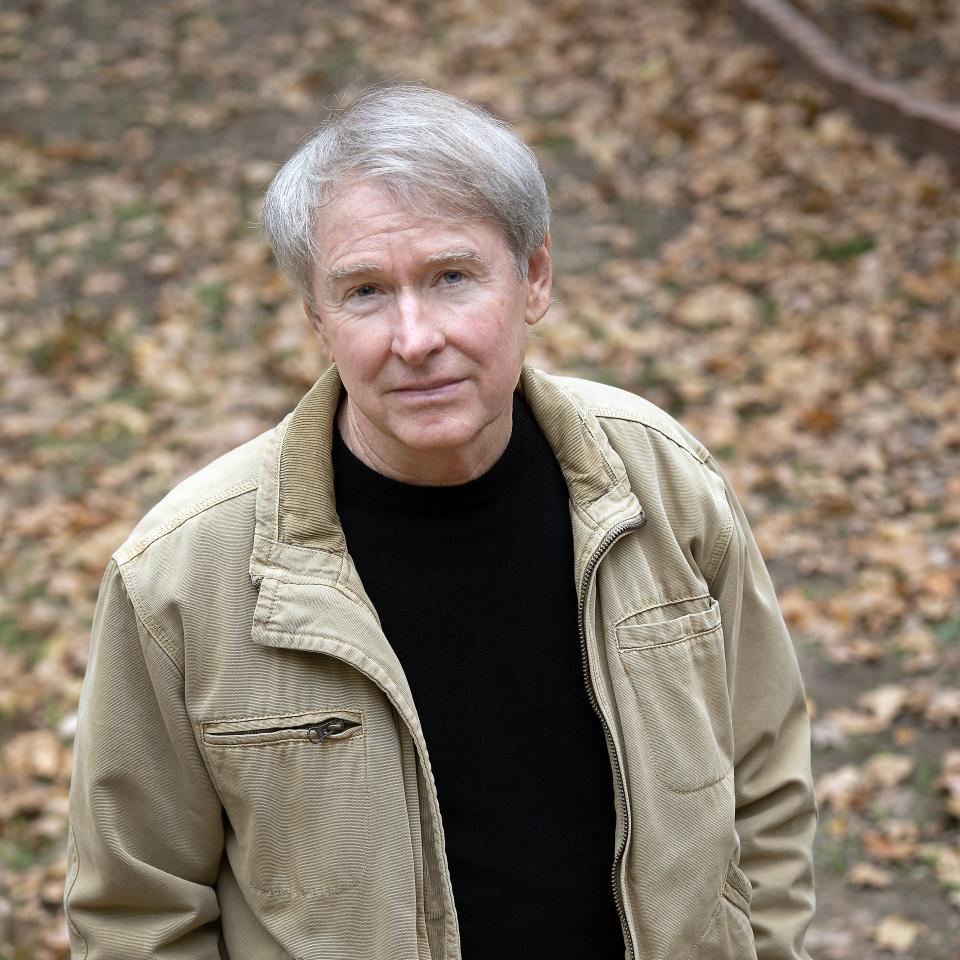Why Bother With the White-Guy Novel?

- Oops!Something went wrong.Please try again later.
- Oops!Something went wrong.Please try again later.
Nearly 30 years ago, a much-talked-about essay in Harper’s magazine presaged the rise of the new millennium’s preeminent type of novel. In “Perchance to Dream” (later retitled “Why Bother?”), Jonathan Franzen wrote gloomily about his struggle to overcome his despair, as a novelist, about “the possibility of connecting the personal and the social.” Franzen lamented the withering interest in and importance of literary fiction, as well as mildly mocking his own frustrated desire to write “social novels” that “Address the Culture and Bring News to the Mainstream.”
Franzen, of course, was writing such a novel, and when The Corrections was published just 10 days before the Sept. 11 attacks, even that world-historical event could not substantively dim the fanfare that greeted it. While Franzen managed to end “Perchance to Dream” on a note of fragile hope, the essay is far from a manifesto about the need to write social novels. Yet it was taken as such, especially after the publication of The Corrections, assumed by many to be Franzen’s attempt at a 21st-century Great Expectations or Vanity Fair. Just when the publicity around the novel’s publication might have been expected to subside, Oprah Winfrey selected The Corrections for her book club; Franzen expressed so much ambivalence about this anointing that she withdrew her offer, triggering viral arguments about literary (and gender) snobbery. For a writer who worried that novels weren’t being talked about enough, he certainly succeeded in producing one that became Topic A.
Perhaps there was something in the air, a craving for the magisterial, because a number of other authors published acclaimed novels in this mode during the early 2000s: Michael Chabon’s The Amazing Adventures of Kavalier & Clay, Jonathan Lethem’s Fortress of Solitude, Jeffrey Eugenides’ Middlesex, Jonathan Safran Foer’s Everything Is Illuminated. (Infinite Jest, by Franzen’s close friend David Foster Wallace, was grandfathered in although it was published in 1996.) The books were long, with large casts of characters from various walks of life. They portrayed the often maddening effort to locate meaning amid the ephemera of mass culture and ever-accelerating technological change. They often incorporated elements from such genres as detective novels, science fiction, and superhero comics. They reaped praise from the press for their “ambitious” attempts to depict “the way we live now”—which, when you consider that the news media has much the same remit, isn’t surprising. And they were mostly—though certainly not entirely—written by white men.
The white-guy social novel has since gone out of fashion, its ambition rewritten as overreach. Who were these white men to presume to speak for the entirety of a diverse culture? Who is the “we” in “the way we live now”? And why were they so celebrated by the media when other, equally talented writers from marginalized groups were treated as lesser or special-interest novelists? It is easy—and a relief at times!—to dismiss an author’s work because his fans are annoying, his press coverage too breathless, his extra-literary pronouncements too clueless or prissy. It’s also worth pointing out that few of these novelists made the kinds of bold claims for their own books deployed by their publicists and the press. The media in particular has long been obsessed with the notion of the “Great American Novel,” a work that ostensibly captures the spirit of the country. Pitching a book in those terms remains an effective way of getting the increasingly distractible public to pay attention to it.

Sometimes a writer just wants to write a long, panoramic book, but for white male novelists this move has become fraught, a seeming bid to occupy more space in bookstores and newspaper pages than they deserve. One solution to this dilemma is to downplay all that ambition. Nathan Hill’s 2016 debut The Nix sold well and made many a critic’s 10-best list (including my own). He even got compared to David Foster Wallace and Thomas Pynchon in the New York Times Book Review. But when the Rumpus interviewed Hill about The Nix—a novel that encompasses the 1968 Chicago protests, academic satire, Occupy Wall Street, video game addiction, the Iraq War, and the dubious ethics of book publishing—he demurred on the “Great American Novel” question, saying he was inclined to agree with Jamaican novelist Marlon James, who maintained that there was “no such thing” because “America is far too many things for one novel to ever capture.”
Nevertheless, Hill’s new novel, Wellness, like The Nix, connects the personal to the social in that early 21st-century mode. The Nix chronicled the youthful idealism and ultimate failings of the boomers, and how that moral arc affected their children. Wellness turns that same scrutiny on Gen X. It begins with a couple, Jack and Elizabeth, college students who meet in Chicago in the 1990s, when they live in neighboring buildings, a warehouse and a factory, once abandoned, then converted into live/work spaces for starving artists. At the behest of his young landlord—who invites Jack to move in because he loves his “authenticity”—Jack, a photographer, documents his building’s transformation from shooting gallery to hipster haven. He photographs paint peeling off walls, discarded hypodermics, and underground bands, all of which his landlord, Benjamin, uploads to a new thing called the internet, which he explains is “this amazing alternative world. You don’t have to prostrate yourself to the usual conformist rules.”


Over 20 years and 624 pages, Jack and Elizabeth will go from seeing Smashing Pumpkins and Liz Phair in tiny clubs with their bohemian friends to parenthood and the purchase of an as-yet-unbuilt high-rise condo from the trend-surfing Benjamin. As their marriage falters, each partner samples from the array of rejuvenating fads offered to their middle-class cohort. Jack takes up a data-driven fitness regimen involving a wearable device that tracks his “blood oxygenation level, sweat pH, skin plasticity, hydration, lactic acid levels, diabetes risk, UV exposure, even his current mood.” Elizabeth, a clinical psychologist researching the placebo effect, obsesses over their son Toby’s performance on such tests as the marshmallow experiment and falls in with a group of law-of-attraction believers in order to bond with their new neighborhood’s parents.
Wellness can be very funny, as when Elizabeth, having collected hundreds of kitchen photos online, insists that the condo should have open shelves. “Isn’t that beautiful?” she sighs over an image of a minimalist kitchen that Jack thinks looks “designed more for reflection and meditation than actual food prep.” As a counterargument, he yanks open one of their cabinet doors and a cascade of Tupperware and sippy cups tumbles out. “If we had open shelves, it wouldn’t look like that,” Elizabeth replies. “It would look better. We would be better.”
The novel stops short of the 2016 election, but often prefigures what’s to come, as when, in Facebook comment threads, Jack tries to argue his father out of internet-fueled conspiracy theories about the Ebola virus. One section of the book meticulously details how the platform’s algorithms lure the older man down ever-nuttier rabbit holes and drive a wedge between father and son.
Does all this “Address the Culture and Bring News to the Mainstream”? Arguably, many of the little dramas Jack and Elizabeth experience are the stuff of the sort of personal essay that has flourished on the internet: “How I Nearly Drove Myself Nuts with Diagnostics—Until I Realized My Kid Is Just Fine.” But when these themes are collected and worked into the long view of two individual lives, the effect is striking. Instead of resolving in a pat little lesson, as so many personal essays do, each subplot becomes one more bead of dissatisfaction threaded on a strand of restlessness. Jack and Elizabeth can’t figure out how to be happy together in the way they once were, and each effort they make to fix this only worsens their dilemma.
The social scope of Wellness may be broad, but its true concerns are intimate. When a smug waiter scolds Jack after overhearing him describe Wicker Park as “abandoned” at the time he and Elizabeth first moved there— “I’m pretty sure it was Puerto Rican,” Jack is informed—the novel isn’t particularly interested in sorting out which of the two is right. What matters to Hill is how the incident makes Jack, a transplant from rural Kansas, feel as insecure and clueless as he did when he first moved to the city. The stakes here are one marriage and whether it can be saved—whether each partner will realize that unhealed wounds from the past, not the distractions of the present, have led to their estrangement. In this sense, Wellness isn’t a social novel at all, because everything in it that could be called “culture” or “news” is ultimately superfluous to its love story. Compared to Franzen’s Freedom—a novel that uses the history of a troubled marriage to critique assorted aspects of contemporary society, from social media to environmental fecklessness—Wellness is less confident in its moral judgements. Or, as a Franzen skeptic might put it, less arrogant. It is like a Franzen novel but without all that Franzen baggage.
That’s one way to avoid the known pitfalls of the big white-guy novel: to stay firmly in your own lane, writing about people much like yourself and your readers and the distinct culture in which they live. Ben Fountain’s Devil Makes Three adopts a different strategy. The novel takes place entirely in Haiti during the aftermath of the 1991 coup that ousted the country’s first democratically elected president, Jean-Bertrand Aristide. Two of the three point-of-view characters are Americans: Matt, a laid-back scuba instructor running a small business catering to tourists, and Audrey, a young, ambitious CIA case officer on her first mission under diplomatic cover. The third, Misha, is the U.S.-born daughter of a prominent Haitian family, refugees from the brutal dictatorship of Jean-Claude “Baby Doc” Duvalier. A graduate student at Brown University researching the literature of the Black Atlantic, Misha applies an assortment of post-structural and postcolonial theories to the increasingly violent and chaotic situation in her homeland, not always to constructive effect.
It takes some nerve nowadays for a white American guy to write a novel presuming to explain Haiti to his readers, and it is part of the meta cleverness of Devil Makes Three that Fountain has made a major character out of exactly the sort of person who would call him out for it. Nevertheless, he is obliged to show his work to an exhausting degree. Fountain has spent a lot of time in Haiti. In 2008, he said he’d visited the country at least 30 times, and that he became fascinated by it because “everything that’s gone on in the last 500 years—colonialism, race, power, politics, ecological disasters—it’s all there in very concentrated form.” While Devil Makes Three contains no scenes set in the U.S., the influence of the nearby superpower looms over the Haitians in the form of illegal arms shipments, an embargo, and the ever-present possibility of an invasion.

The model for this type of novel is older than the social novels of the 2000s: Graham Greene and Robert Stone come to mind. But those novelists tended to use foreign nations and their wars as crucibles shaping the personalities of Anglo characters. Fountain takes pains to place Haiti itself at the center of the story. Matt’s background is barely sketched, and Audrey, the cocky daughter of an all-American war hero, entertains no doubts about the supremacy of the New World Order proclaimed by George H.W. Bush. Misha’s family, on the other hand, with its complex social and economic history, persecuted by Duvalier and dismissive of Aristide, is depicted in full.
So is nearly everything else about Haiti. Fountain’s authorial voice has an irresistible, unfussy confidence that carries the novel a great distance. But eventually the enviable sang-froid of his style staggers under the info dumps it is asked to deliver. Earnest American readers have a fondness for learning about other countries and cultures through fiction—The Kite Runner rocketed onto the bestseller lists during the U.S. war in Afghanistan—but the exposition must be carefully balanced with relatable human drama. Fountain may be “bringing news to the mainstream,” as Franzen put it, but it’s way more news than the mainstream is prepared to digest in novel form. Detailed descriptions of diving procedures—the kind of stuff that manly 20th-century novelists used to display their real-world know-how—compound this problem, forcing the reader to slog through sentences like “They ran a chain bridle and flounder plate from the Chumster to the rig, detached the holdback line, and swam along with the tender as it proceeded at dog-paddle pace.”
How much of this is due to Fountain’s desire to impart what makes Haiti so fascinating to him, and how much is meant to prove that he has the expertise to write such a novel, despite his own unfortunate white male Americanness? The problem of the white-guy novel today is one of authority: Once, such writers could exercise it effortlessly, but now, if they want to have any claim to right-thinking liberalism, their legitimacy is automatically suspect. Even Hill, who is circumspect enough to limit the milieu he depicts to white, middle-class Americans, found it necessary to include several pages of citations at the back of Wellness, detailing the sources he used on such subjects as prairie fires, gentrification, and contemporary marital malaise, as well as the various psychology studies Elizabeth refers to. It’s hard to imagine someone like, say, Philip Roth feeling the need to do this. The authority of the old-school white male novelists might have been unearned, but it certainly made for a more streamlined reading experience.
All the way back in 1996, in writing “Perchance to Dream,” Franzen fretted about finding an audience for his fiction when readers might understandably choose books by authors whose identities they share. “To the extent that the American novel still has cultural authority,” he wrote, “it’s largely the work of women.” Wasn’t, after all, the idea of “a universal ‘American’ culture” really “little more than an instrument for the perpetuation of white, male, heterosexual elite” whose “decline is the just desert of an exhausted tradition”? On the other hand, he had also encountered young writers who complained of feeling “imprisoned by their ethnic and gender identities.” In its anxiety about the premium placed on identity in American literary culture, “Perchance to Dream” could, with a few strategic tweaks, be mistaken for an essay written today.
Literary trends are as cyclical as fashion. Perhaps the social novel is due for a comeback? Oprah had no compunctions about choosing Wellness as her September book club pick, proclaiming it an “incredible ride.” (Fittingly, Hill, unlike Franzen, didn’t seem conflicted about the honor.) I don’t know if I’d go that far, but it is smart, a shrewd corrective to Gen X exceptionalism, and above all, a lot of fun. So were many of those fat white-guy novels of the 2000s, even if they were oblivious to their own blind spots. So are the occasional novels in that vein that have since been published by authors who aren’t white guys, from Jennifer Egan’s A Visit From the Goon Squad to James’ A Brief History of Seven Killings (a prime candidate for the Great Jamaican Novel) to Kiley Reid’s sharp, humane satire of contemporary race and class relations, Such a Fun Age. I, for one, wouldn’t mind reading more novels that boldly attempt to make sense of our ever more fractured and absurd everyday lives, and that treat this subject as something important—even, now and then, one written by a white guy.

